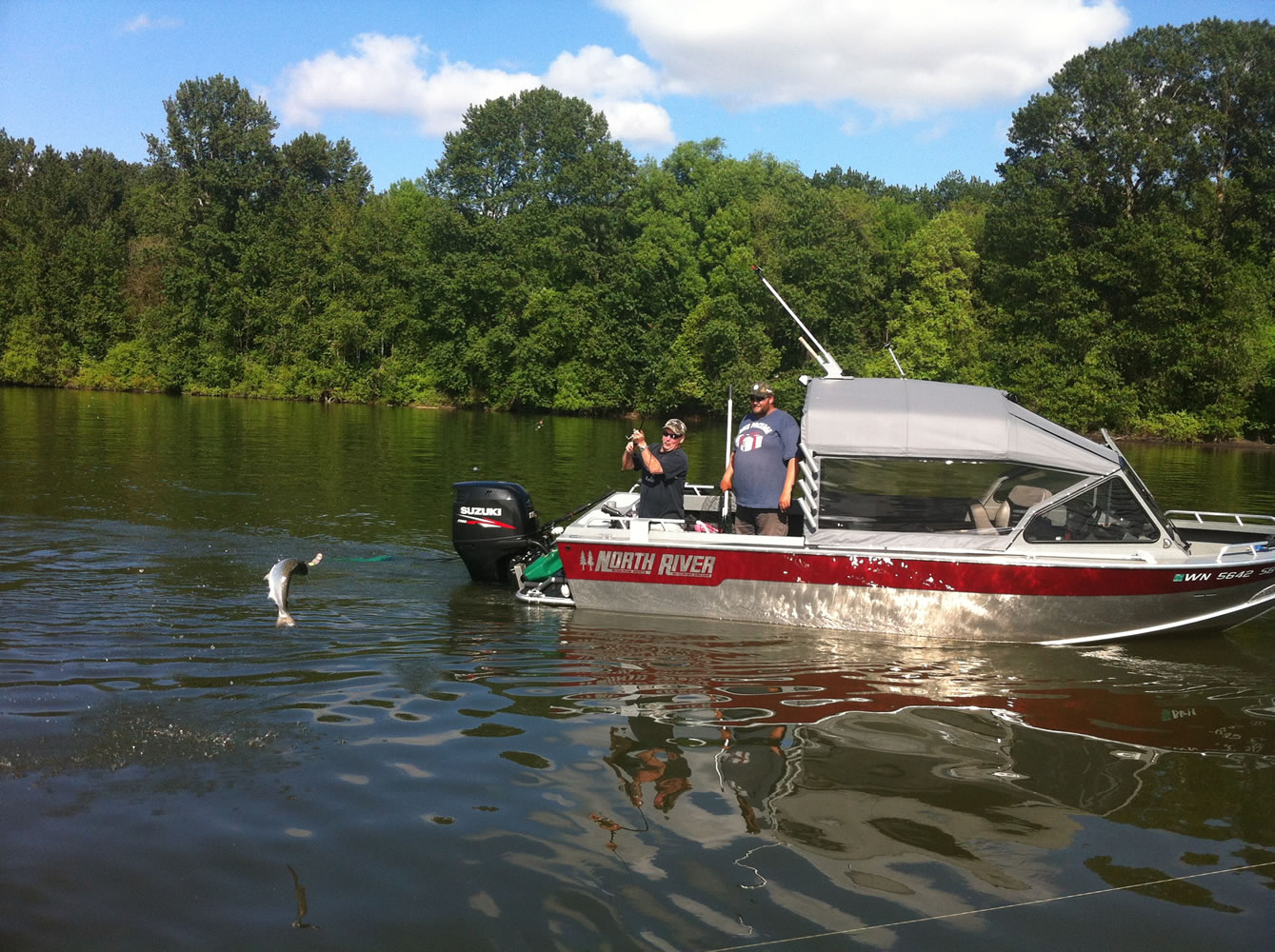Sportsmen feuded Wednesday before the Columbia River Compact whether anglers should be required to release wild summer chinook salmon in the season opening on Monday.
June 16 marks the start of the summer salmon management period. The lower Columbia will be open Monday through June 30 for six salmon, although only two adult hatchery summer chinook or hatchery steelhead or one of each. Any sockeye can be retained, but count against the two-adult limit.
However, an eight-hour commercial fishery is scheduled Monday night in the lower Columbia and the gillnetters can keep any summer chinook — wild or hatchery.
Tribal commercial fishing begins at 6 a.m. Monday in the Bonneville, The Dalles and John Day pools — again with wild or hatchery fish able to be retained.
Beginning Saturday, any chinook — hatchery or wild — can be kept off the Washington coast.
Hatchery fish are marked with a clipped adipose fin.
Kevin Kuhel of Milwaukie, Ore., a member of the bistate Columbia River Recreational Advisor Group, said sportsmen are getting a raw deal.
“I like to fish and I want to put fish on my table,” Kuhel testified at a hearing on Wednesday.
Robert Moxley, an advisory group member from Dundee, Ore., told Washington and Oregon officials “the customer base is not happy.”
“I know a lot of sport fishermen who are really ticked off having to throw fish back with a 40 percent mark rate,” said Bruce Crookshanks, a commercial fisherman from Lewis County. “Six out of 10 is a lot to throw back.”
Jim Wells of Salmon For All, an Astoria-based commercial fishing organization, said sportsmen should not blame the netters for the hatchery-only regulation.
“The only reason is to stretch out the season so the guides can catch more fish,” Wells said. “Don’t put it on the gillnet fleet. That’s not where the blame lies. It’s within your own industry.”
Harry Barber of Washougal, also a member of the recreational advisor group, said summer chinook are harvested hard off southeast Alaska, British Columbia and Vancouver Island.
“By the time they get here we need to save every wild fish,” he said.
According to Barber, there are summer chinook spawning tributaries in north-central Washington that are falling short of wild fish goals, while exceeding hatchery fish goals.
Barber also said the $52 million Chief Joseph Hatchery in Eastern Washington is coming online and using wild summer chinook for brood stock. Between the needs of the hatchery, and natural spawning, “every wild fish is critical,” he said.
The mark rate is 60 percent and will be even higher when fin-clipped summer chinook from Chief Joseph Hatchery enter the fishery in a few years, he added.
Liz Hamilton, executive director of the Northwest Sportfishing Industry Association, said the summer chinook regulations were debated years ago and every sport group except one supported releasing wild fish.
Hamilton said a handful of summer chinook make it all the way to Canada.
“That’s a miracle,” she said.
The sport allocation for the lower Columbia River of summer chinook is 2,414, while the commercials are allowed 1,893.
Without release of wild chinook, the June 16-30 would be significantly shorter, Hamilton said.
John North, a biologist for the Oregon Department of Fish and Wildlife, said the sport allocation would be filled by June 25, rather than June 30, if wild summer chinook were retained in the lower Columbia.
Robin Ehlke, a biologist for the Washington Department of Fish and Wildlife, said state officials assume 15 percent of the wild summer chinook released in the sport fishery die as a result of handling.
Tony Nigro of the Oregon Department of Fish and Wildlife and Guy Norman of the Washington Department of Fish and Wildlife decided to continue the wild-release regulation.
Nigro said he would reconsider the wild-release rule if there was significant new information.
“The testimony today didn’t meet that threshold, quite frankly,” he said.
Norman said before revising the regulation all participants in the summer chinook fishery need to be in the discussion, including anglers upstream of Bonneville Dam and Indian tribal representatives.




